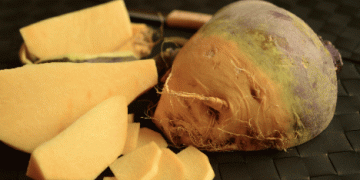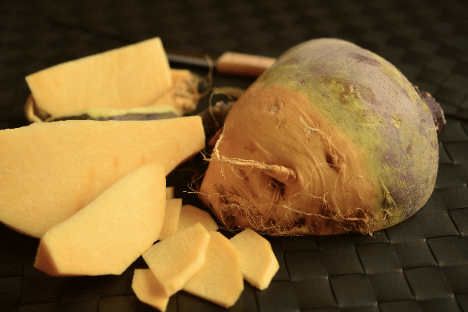The Bodenkohlrabi, or Steckrübe, is an often-overlooked vegetable in today’s agricultural landscape. A cross between Kohlrabi and the turnip, this root vegetable has an important place in history, particularly in Switzerland and Germany, where it was a crucial food source during times of hardship. The plant’s resilience and versatility helped it transition from being primarily used as livestock feed to becoming a lifesaver for people during periods of food scarcity, such as the Steckrübenwinter of 1916 in Germany.
Historical Significance
During the First World War, food shortages forced populations to rely on Bodenkohlrabi as a staple, especially when other crops like potatoes were unavailable. The Steckrübenwinter of 1916 marked a severe famine in Germany, and Steckrübe became one of the few remaining food sources. Previously cultivated mainly as animal feed, it quickly became essential for human survival, earning the nickname “war vegetable.”
Its low cultivation requirements and ability to grow in various soils made Bodenkohlrabi an attractive choice during these difficult times. Its hardiness allowed it to thrive in cold conditions, withstanding temperatures as low as minus 10 degrees Celsius, and its long storage life made it an important winter food. Despite its crucial role in history, the stigma of being a “war food” led to a decline in its popularity in the following decades.
From Crisis to Culinary Niche
In modern-day Switzerland, Bodenkohlrabi has shifted from being a crisis crop to a niche vegetable, appreciated for its culinary potential. Once seen as a last resort during famines, it is now valued for its delicate flavor and versatility in the kitchen. However, it remains a rare find in supermarkets, more likely to be seen at local farmers’ markets or specialty grocers.
Bodenkohlrabi’s season in Switzerland runs from July to April, making it a valuable crop during the cooler months when other fresh vegetables are scarce. Its ability to thrive in nearly any type of soil and its cold tolerance make it a low-maintenance crop for farmers. Additionally, the vegetable stores well, making it an excellent choice for long-term storage through the winter months, much like it was used in the past.
Cultivation and Market Potential
While Bodenkohlrabi is no longer the essential crop it once was, its ability to grow in harsh conditions, combined with its unique flavor profile, presents opportunities for farmers looking to diversify their produce offerings. It is particularly suited for organic farming and small-scale production, where its rustic image and historical importance can be leveraged for marketing.
According to the Landwirtschaftlicher Informationsdienst (LID), Bodenkohlrabi has become a niche product in Switzerland, but there is potential for it to expand beyond that niche. Its history and resilience make it a compelling choice for farmers interested in cultivating crops that offer both historical value and practical benefits.
Though Bodenkohlrabi has faded from its former prominence, it remains a vegetable of historical and agricultural significance. From its pivotal role in feeding populations during wartime to its modern resurgence in niche markets, Bodenkohlrabi’s journey reflects the evolution of agricultural practices and consumer preferences. As farmers and agronomists look for crops that are both sustainable and unique, Bodenkohlrabi may well find a renewed place in Swiss agriculture.































